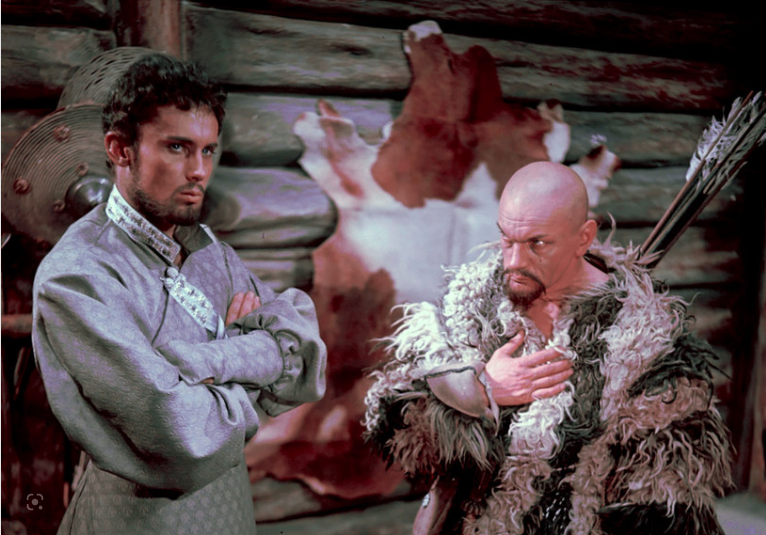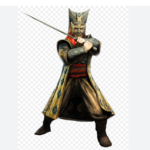They could have come at almost any time of the year, although they obviously preferred the warm months. They could have waited for the troops guarding the area to change their place of deployment. They could attack this village or that town to deliberately draw the protection troops away from their intended victims, in intended towns and villages. With the troops guarding these territories being occupied elsewhere, they would then attack villages or towns, loot and pillage, burn and tear down, but above all abduct hundreds, thousands of people. Who?
The Tatars – a Mongolian people – who inhabited the Crimea at the time. Yes, the same Crimea over which there is now a dispute between Ukraine and Russia; the same Crimea which, in 1954, the General Secretary of the Communist Party of the Soviet Union, Nikita Khrushchev, arbitrarily detached from Russia and gave to Ukraine; the same Crimea from which Comrade Joseph Stalin, a darling (Uncle Joe) of the Western press during the years of the Second World War, evicted the Tartars; the same Crimea which the English and French tried to conquer in the 19th century (Crimean War); the same Crimea which Empress Catherine II of Russia conquered in the 18th century. The Tartars found their way to this peninsula in the Middle Ages when they invaded eastern and central Europe. In the times we are talking about they were Muslim vassals of Turkey.
(Excuse the following remark, but most of the readers have no idea about all this. There is nothing wrong with them not having the slightest idea about the history of this peninsular or, indeed, any other region around the world, so long as they do not start judging who is right in this or that dispute, in this or that corner of the globe. But we digress.)
The people abducted almost year after year for two centuries – hundreds, thousands, tens of thousands of white and Christian men, women and children (the old and sick were simply killed by the Tartars) – were then taken to the slave markets in Turkey, above all in Istanbul, the former Constantinople, where children were separated from their parents, where spouses were separated, where siblings were separated, and they were sold to buyers from all ends of the Ottoman Empire (which stretched from Iran to Morocco, from Belgrade to Sudan), with pretty young girls being placed in harems where they sexually serviced Muslim men, with many teenage boys selected to serve in the harems of the sultan and men in top positions being castrated. Anaesthesia in the modern sense of the word was unknown at the time. If you occasionally watch Turkish films or observe Turkish athletes, you are bound to be amazed more than once by the appearance of some of them: the appearance of a European anthropological type.
These people – let us recall: hundreds, thousands, tens of thousands, year after year for at least two centuries – were abducted from a vast area covered mainly with steppes. The steppes stretched for hundreds of kilometres in all directions. Because the land here – today’s Ukraine – was fertile, it attracted settlers from the multinational, multicultural and multiconfesional (and therefore weak as the European Union) Polish-Lithuanian Commonwealth, which at the time ruled over these vast steppes. Here one could start life anew, one could take as much land as one could cultivate, one could lead a prosperous existence, and one could escape the problems one experienced in other regions of the country. Yes, the associations with the American West, with the American colonisation of the 19th century, are most legitimate. Except for what we described above. The American settlers had to deal with Indians who did not systematically abduct them and sell them – say to the Mexicans – into slavery. The Tartars – that Mongolian Muslim people – were the bane of these lands. Hundreds of thousands of people suffered at their hands, mainly Poles and Ruthenians (in today’s language: Ukrainians and Russians). Punitive reprisal expeditions brought peace only for a short time.
Among those kidnapped and abducted to Turkey, there was a special category of unfortunates: these were small boys who were given a special upbringing to make them into soldiers: the so-called Janissaries. Even as adult warriors, they distinguished themselves by their bravery and deep devotion to the Sultan. They were special people: raised without mothers, without fathers, without siblings, without closer or distant relatives. They were professional killers who were used in wars against the same Poland, that is, against the same country from whose territory they had been abducted a dozen years earlier. Statistically, it must have happened once in a while that they would kill, rape or abduct into slavery not only their former compatriots, but also their own relatives, their own aging parents, of whose existence and identity they had no idea.
Such was the fate of white slaves in the hands of the Asian anthropological type. Somehow it does not occur to either the Turks or the Tatars to apologize on behalf of their ancestors to the descendants of those slaves; it does not occur to either the Turks or the Tatars to pay them reparations; it does not occur to them to kneel before the descendants of these unfortunates, to topple the monuments of those Turkish or Tatar magnates who were involved in the acquisition of slaves, who were involved in the slave trade, who owned slaves, who used the sexual services of enslaved Slavs, who used the services of castrated Slavs. Nor do the descendants of the victims – a certain percentage of modern Turks – claim any such thing, and – attention! attention! – it does not occur to those descendants of those slaves to justify their own life’s failures at school or university or while trying to make a career by the fact that their ancestors lived in humiliation, that they were exploited, that they were humiliated or beaten.
All this in the face of the fact that at least some of the descendants of those Slavic slaves stand out anthropologically from the Turks proper (whose ancestors conquered the Anatolian Peninsula by arriving there with the Seljuks) almost as clearly as American blacks stand out from white Americans. Nor do the descendants of those enslaved Slavs somehow form closed communities. Rather, one could say that they are better off than the “native” Turks: after all, an actor or actress who looks like a European enjoys greater popularity and therefore does not need the prosthesis for a career in show business that American black actors need in the form of that specific (if not weird) kind of Hollywood affirmative action. These Slavs were slaves too, and so what?

A shot from the 1969 feature film „Colonel Wołodyjowski” or „Pan Wołodyjowski”
showing Tartar warriors that used to wreak havoc to the south-eastern regions
of the then Polish-Lithuanian Commonwealth.




